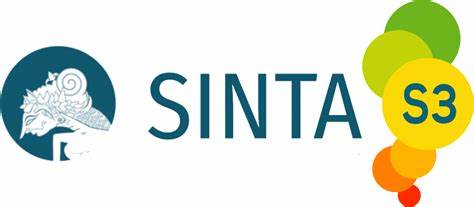GAMIFIED VOCABULARY LEARNING WITH DUOLINGO: EFL STUDENTS’ PERCEIVED BENEFITS, CHALLENGES, AND RESPONSES
Abstract
The use of technology in language learning has increased due to the innovation of education in this digital era. One form of technology-based language learning is the use of mobile application, such as Duolingo. While the majority of previous studies have employed a quantitative approach, this study aims to explore secondary EFL students’ perspectives on (1) the benefits of using Duolingo in vocabulary learning, (2) the challenges they face during its use, and (3) their responses to the application. This qualitative descriptive case study involved classroom observation and interviews with eight junior high school students in Karawang. The data analyzed using thematic analysis. The results of this study reveal three main themes. First, students experienced several benefits from using Duolingo, including improved vocabulary acquisition, contextualized vocabulary exposure, multimodal learning features, ease of access, and flexibility. Second, students encountered obstacles, such as limitations in the free version of the app and unstable internet connectivity. Third, students expressed various emotional and motivational responses to using Duolingo, describing it as a joyful, relaxed, and motivating experience, although some noted boredom due to repetitive tasks. Overall, Duolingo was perceived as a helpful and engaging tool for vocabulary learning, aiding students' vocabulary development and motivation
References
Agustina, V., Thamrin, N. R., & Oktoma, E. (2024). The Role of English Language Proficiency in the Global Economy and Business Communication. International Journal Administration, Business & Organization, 5(4), 82–90. https://doi.org/10.61242/ijabo.24.423
Ajisoko, P. (2020). The use of Duolingo apps to improve English vocabulary learning. International Journal of Emerging Technologies in Learning (iJET), 15(7), 149-155.https://doi.org/10.3991/IJET.V15I07.13229
Ally, M. (Ed.). (2009). Mobile learning: Transforming the delivery of education and training. Athabasca University Press.
Almousawi, S. A. (2021). Examining English Language Learning Apps from a Second Language Acquisition Perspective. International Journal of Higher Education, 10(5), 166-182. https://doi.org/10.5430/ijhe.v10n5p166
Apoko, T. W., Dunggio, A. A., & Chong, S. L. (2023). The Students’ Perceptions on the Use of Mobile-Assisted Language Learning Through Duolingo in Improving Vocabulary Mastery at The Teritary Level. English Review: Journal of English Education, 11(1). 17-26. https://doi.org/10.25134/erjee.v11i1.7069
Braun, V., & Clarke, V. (2022). Thematic Analysis: A practical guide to understanding and doing.
Callies, M., Hehner, S., Meer, P., & Westphal, M. (2021). Glocalising Teaching English as an International Language. In Glocalising Teaching English as an International Language. https://doi.org/10.4324/9781003090106
Creswell, J. W. (2021). Educational Research: Planning, Conducting, and Evaluating Quantitative and Qualitative Research, Ebook, Global Edition. Pearson Education.
Creswell, W. J., & Creswell, J. D. (2018). Research Design: Qualitative, Quantitative, and Mixed Methods Approaches. Sage.
Crystal, D. (2003). English as a global language. Cambridge university press.
Dağgöl, G. D. (2020). Perceived academic motivation and learner empowerment levels of EFL students in Turkish context. Participatory Educational Research, 7(3), 21-37.
https://doi.org/10.17275/per.20.33.7.3
Daqiq, B., Akramy, S. A., & Barati, A. M. (2024). The Impacts of English Language Proficiency on Employment Opportunities. American Journal of Science Education Research. https://doi.org/10.47991/2835-6764/AJSER-183
Erk, M., & Ručević, S. (2021). Early English language acquisition: how early is early enough? Suvremena Lingvistika, 47(92). https://doi.org/10.22210/suvlin.2021.092.02
Fitriani, & Modokompit, G. P. (2025). The Effect of Duolingo Application in Improving Students’ English Skills: A Research of Grade X Students at SMKN 3 Baubau. Journal of English Language Teaching and Literature (JELITA), 6(1), 2721–1916.
Freeman, C., Kittredge, A., Wilson, H., & Pajak, B. (2023). The Duolingo method for app-based teaching and learning. Duolingo Research Report.
Golby, M. (2001). Case study method: key issues, key texts. Teacher Development, 5(3), 403-408. https://doi.org/10.1080/13664530100200295
Kapp, K. M. (2012). The gamification of learning and instruction: game-based methods and strategies for training and education. John Wiley & Sons.
Lim, F. V., & Toh, W. (2024). Apps for English Language Learning: A Systematic Review. In Teaching English with Technology (Vol. 24, Issue 1). https://doi.org/10.56297/FSYB3031/GAQR3589
Maru, G., Kilmas, F., & Rombepajung, P. A. (2024). Students’ Perception of Using Duolingo as a Media for Learning Vocabulary Article History. SoCul: International Journal of Research in Social Cultural Issues, 4(1), 1-12.
Mayer, R. (2020). Multimedia Learning. In Multimedia Learning. https://doi.org/10.1017/9781316941355
Nation, I. S., & Nation, I. S. P. (2001). Learning vocabulary in another language (Vol. 10, pp. 126-132). Cambridge: Cambridge university press.
Nazari, N. A., & Riazi, A. M. (2024). Adaptable English Language Teaching. Routledge.
Ningtyas, D. A. P., & Reftyawati, D. (2024). Teaching Vocabulary Using the Duolingo Application in Junior High School. Fonologi : Jurnal Ilmuan Bahasa Dan Sastra Inggris, 2(3), 310–324. https://doi.org/10.61132/fonologi.v2i3.960
Nita, S., Sari, E. R. N., Sussolaikah, K., & Risky, S. M. F. (2023). The Implementation of Duolingo Application to Enhance English Learning for Millennials. Journal International of Lingua and Technology, 2(1), 1-9. https://doi.org/10.55849/jiltech.v2i1.215
Nugroho, A., Van, D. T. H., Putra, H. R., & Nanda, G. A. (2022). To What Extent Does Informal Digital Learning of English Contribute to Learners’ Communicative Competence?. Tadris: Jurnal Keguruan dan Ilmu Tarbiyah, 7(2), 409-422. https://doi.org/10.24042/tadris.v7i2.13500
Rabani, S., Khairat, A., Guilin, X., & Jiao, D. (2023). The role of technology in Indonesian education at present. Journal of Computer Science Advancements, 1(2), 85-91. https://doi.org/10.55849/jsca.v1i1.403
Rao, P. S. (2019). The importance of English in the modern era. Asian Journal of Multidimensional Research (AJMR), 8(1), 7-19. https://doi.org/10.5958/2278-4853.2019.00001.6
Richards, J. C. (2002). Theories of teaching in language learning. Methodology in Language Teaching : An Anthology of Current Practice, 19, 25.
Schmitt, N., & Schmitt, D. (2020). Vocabulary in language teaching. Cambridge university press.
Senatama, G., & Kartono, D. T. (2023). Investigating freedom to learn program as a form of education decentralization in Indonesia. Ittishal Educational Research Journal, 4(2), 55-65. https://doi.org/10.51425/ierj.v4i2.44
Traxler, J., & Kukulska-Hulme, A. (Eds.). (2007). Mobile learning: A handbook for educators and trainers. Routledge.
Warschauer, M., & Liaw, M. L. (2010). Emerging Technologies in Adult Literacy and Language Education. National Institute for Literacy.
Widodo, Y. B., & Akbar, K. F. (2024). Effectiveness of Technology Use in Indonesian High Schools: Student Engagement, School Capacity, Teacher Performance. International Journal of Business, Law, and Education, 5(1), 615-627. https://doi.org/10.56442/ijble.v5i1.442
Downloads
Published
Issue
Section
License

This work is licensed under a Creative Commons Attribution-ShareAlike 4.0 International License.
The author is responsible for acquiring the permission(s) to reproduce any copyrighted figures, tables, data, or text that are being used in the submitted paper. Authors should note that text quotations of more than 250 words from a published or copyrighted work will require grant of permission from the original publisher to reprint. The written permission letter(s) must be submitted together with the manuscript.




